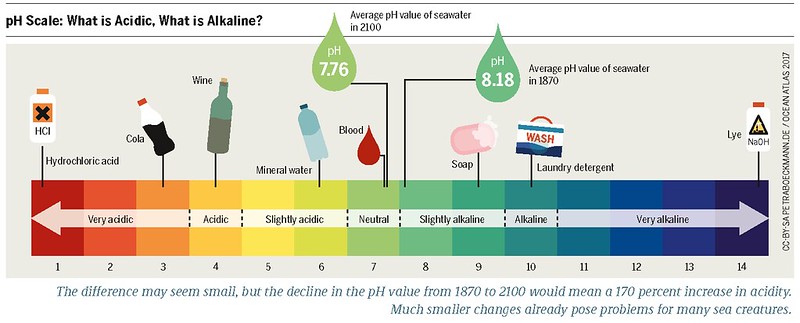The pH of acetic acid in water can range from approximately 2.4 to 4.3, depending on its molar concentration. A 0.9 or approximately 1.0 M acetic acid solution has a pH of about 2.4, while a 0.1 M acetic acid solution has a pH of 2.87, and a 0.0001 M acetic acid solution has a pH of 4.3.
Understanding Acetic Acid Properties
Acetic acid, also known as ethanoic acid, is a weak acid with a pKa of 4.76 at 25°C. It is a colorless, volatile liquid with a distinctive sour odor. Acetic acid is widely used in various industries, including food, pharmaceuticals, and chemical manufacturing.
When acetic acid is dissolved in water, it undergoes a dissociation reaction, forming hydrogen ions (H+) and acetate ions (CH3COO-). The equilibrium of this reaction determines the pH of the solution.
The pH of an acetic acid solution can be calculated using the following formula:
pH = pKa + log([CH3COO-] / [CH3COOH])
Where:
– pKa is the negative logarithm of the acid dissociation constant (pKa = 4.76 for acetic acid)
– [CH3COO-] is the concentration of acetate ions
– [CH3COOH] is the concentration of undissociated acetic acid
Factors Affecting the pH of Acetic Acid in Water
-
Molar Concentration: The pH of an acetic acid solution is directly related to its molar concentration. As the concentration of acetic acid increases, the pH decreases, and the solution becomes more acidic.
-
Presence of Contaminants: Water with 0.1% acetic acid may contain various contaminants and substances, such as calcium, potassium, magnesium, sodium, reserpine, and digoxin. These impurities can affect the pH range, which can be between 3.2 and 3.5.
-
Purification Processes: To maintain a consistent pH level, it is recommended to use purification methods, such as distillation or filtration, to remove impurities from the acetic acid solution.
-
Neutralization with Bases: If the pH of the acetic acid solution needs to be adjusted, a user can add a base, such as sodium hydroxide (NaOH) or potassium hydroxide (KOH), to neutralize the acid and raise the pH to the desired level.
Practical Applications and Considerations
-
DIY pH Balancing: For DIY users looking to balance the pH of acetic acid in water, it is essential to understand the properties of acetic acid and the potential contaminants present in the solution. By removing impurities through purification or neutralizing the acid with a base, users can achieve the desired pH level.
-
Industrial and Commercial Use: In industrial and commercial settings, the pH of acetic acid solutions is crucial for various applications, such as food preservation, pharmaceutical manufacturing, and chemical processing. Maintaining the appropriate pH range is essential for ensuring product quality, safety, and regulatory compliance.
-
Glacial Acetic Acid: Glacial acetic acid, which is the purest form of acetic acid, contains a small amount of water (0.1%) that lowers its melting point. This property is important to consider when working with acetic acid in various applications.
Conclusion
Understanding the pH of acetic acid in water is crucial for a wide range of applications, from DIY projects to industrial processes. By considering the factors that affect the pH, such as molar concentration, contaminants, and purification methods, users can effectively balance the pH of acetic acid solutions to meet their specific needs.
References:
– What is the Ph of acetic acid? – Quora
– Water with 0.1% acetic acid | 14282 – Honeywell Research Chemicals
– Acetic acid – Wikipedia

